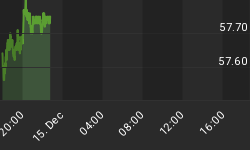There's a slew of US economic reports out today.
Let's take a look starting with a look at Import and Export Prices as described by Econoday.
Cross border price pressures continue to move lower. Import prices fell 0.5 percent in October including a steep 5 tenths downward revision to September to minus 0.6 percent. And it's not just gasoline! Nonpetroleum import prices fell 0.4 percent for the 10th decline in a row. Year-on-year, total import prices are down 10.5 percent, which is right in line with trend, with nonpetroleum down 3.4 percent for the largest drop since October 2009.
The story on the export side is the much same with export prices down 0.2 percent for a year-on-year decline of minus 6.7 percent. Excluding agricultural products, export prices fell 0.3 for a year-on-year decline of minus 6.1 percent.
Prices have been falling steadily for about a year in this report with declines also appearing for finished goods in what is a very important deflationary trend. Import prices for capital goods are down 2.3 percent year-on-year with vehicles down 1.6 percent and consumer goods down 0.6 percent. The export side is similar including a 2.4 percent year-on-year decline for consumer goods.
By country, contraction is steepest with Canada where import prices fell 1.0 percent in the month for a 20.5 percent year-on-year decline. Latin America is next, also down 1.0 percent in the month for a year-on-year decline of 14.7 percent. Import prices fell 0.1 percent with China where the year-on-year rate is minus 1.4 percent while prices with Europe actually rose 1 tenth in the month for a year-on-year minus 2.9 percent.
Contraction in import prices not only reflects low commodity prices but also the strength of the dollar which has been giving U.S. buyers more for their dollars, while contraction in export prices reflects generally deflationary global trends. Fed policy makers may be worried that slack has been absorbed in the labor market but they are also concerned about the continued lack of price pressure, the latter speaking against the urgency for a rate hike.
Import/Export Prices vs. Consensus
Economists were pretty close to the mark on export prices, but missed the boat totally on imports.
The consensus import price change was -0.1% with the actual result of -0.5%, outside the range of any economist's estimate.
Falling prices are a good thing actually, but the Fed sure does not see it that way.
As noted just a bit ago ...
- China Posts Lowest Business Sentiment on Record as Deflationary Pressures Rise
- China's PPI Drops 44th Month, Chinese Trade Slumps on Waning Demand, Deflationary Pressures
















